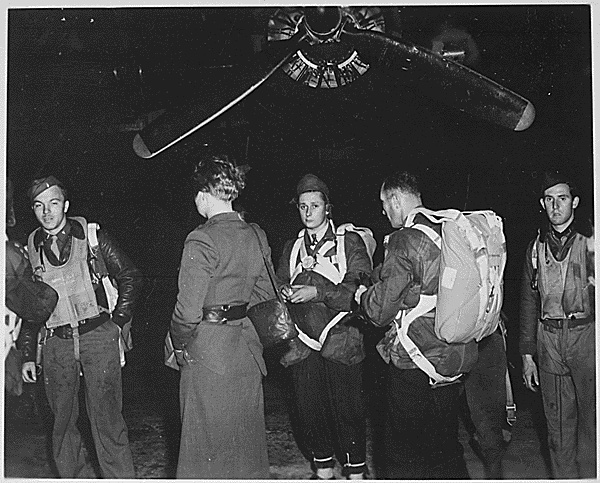Battle of Fair Oaks / Seven Pines (May 31 and June 1, 1862)
General Joseph E. Johnston, known for his cautious approach, conducted a methodical retreat through the Peninsula, engaging in inconclusive skirmishes along the way. Recognizing his numerical disadvantage, the Confederate army executed a retreat to the northwest, successfully crossing the Chickahominy River, which served as the sole natural barrier separating the Peninsula from Richmond. A Union naval expedition aimed at advancing up the James River toward Richmond had been halted at Drewry’s Bluff, a situation that Johnston adeptly exploited by positioning his right flank at that location. Additionally, he stationed A.P. Hill at the extreme left flank along a bend in the Chickahominy, compelling McClellan to cross the river to reach Richmond. While a segment of the Union army managed to cross, other units remained stationed to the east of the river.
Until this point, President Davis had perceived Johnston’s caution as a liability, urging him to take the offensive against McClellan. However, Johnston, fully aware of his inferior numbers, was strategically waiting for an opportune moment to strike an isolated portion of McClellan’s army. At this juncture, two Union corps had successfully crossed the Chickahominy River and were positioned alarmingly close to Richmond, just four miles away, where they could hear the ringing of church bells.
As the Union forces positioned themselves on either side of the seemingly tranquil river, a deluge of rain ensued, resulting in severe flooding that rendered the river and surrounding swamps nearly impassable. This natural disaster effectively divided the Union army; despite the proximity of the two factions, their only means of communication was a bridge located several miles away. Seizing the opportunity presented by the fragmentation of McClellan’s forces, Johnston planned to strike the contingent of the Union army stranded south of the river. In a calculated move, he could potentially deploy 22 of his 29 brigades, totaling approximately 51,000 troops, against the III and IV Corps, which together comprised 33,000 soldiers.
During the Battle of Seven Pines, also known as Fair Oaks, which took place from May 31 to June 1, 1862, General Johnston launched an assault against the vulnerable corps stationed there. The offensive occurred at two key locations: the railroad station at Fair Oaks and the crossroads of Seven Pines, situated approximately one mile apart. Although the attacks lacked coordination, they proved to be effective, with General D.H. Hill spearheading the offensive and directing all available reinforcements to the front lines.
The resultant attack was uncoordinated. Johnston launched an offensive against two Union corps that were positioned separately across the Chickahominy River, effectively cut off from the main body of the Union army. His strategy was intricate, yet he failed to provide clear instructions to his commanders regarding the intended sequence of events. The plan involved a demonstration by his left flank while Longstreet was to approach from three different directions, one of which included DH Hill’s division tasked with assaulting a critical crossroads near a cluster of seven large pines, known as Seven Pines.
However, Longstreet deviated from the intended route, mistakenly taking the Williamsburg Road instead of the Nine Mile Road. While some of his troops found themselves in the correct location, they were uncertain about the timing of their assault. Ultimately, only DH Hill’s division, comprising approximately 10,000 soldiers, engaged Silas Casey’s brigade of merely 6,000, resulting in a significant breakthrough. Despite Johnston being a mere 2.5 miles from the front lines, he was unable to hear the sounds of battle due to an acoustic shadow, which hindered his ability to send reinforcements in a timely manner.
Amid this pivotal confrontation, General Johnston was wounded while actively leading his troops. A veteran present at the scene recounted the chaos, stating, “… every deadly projectile which could take a human life and maim and disfigure were showered upon us.” As bullets and artillery shells flew around him, a bullet struck Johnston in his right shoulder, followed by a shell explosion that sent a fragment into his chest, causing him to fall unconscious from his horse. He suffered a broken shoulder and two fractured ribs, and his aides promptly transported him to safety, where he eventually regained consciousness.
Upon regaining consciousness, Johnston immediately requested the retrieval of his sword and pistols, which had fallen during his fall. He expressed the sentimental value of the sword, stating, “The sword was the one worn by my father in the Revolutionary War, and I would not lose it for ten thousand dollars.” Drury Armistead of the 3rd Virginia Cavalry bravely ventured back to recover the items. In the meantime, Major General Gustavus Smith assumed command, but the renewed attack lacked the necessary vigor. The following day, General Lee took over leadership, with McClellan expressing a preference for Lee over Johnston. This misapprehension was due to Lee’s early struggles at Cheat Mountain, which led McClellan to question Lee’s decisiveness under pressure.
The outcome of the battle was indecisive. The Union forces managed to hold their ground, allowing McClellan to continue his advance toward Richmond. The casualties were substantial, with Union losses totaling 5,031 (including 790 killed, 3,594 wounded, and 647 captured or missing) and Confederate losses amounting to 6,134 (with 980 killed, 4,749 wounded, and 405 captured or missing). This engagement was the second largest and bloodiest battle of the war thus far, following the Battle of Shiloh just eight weeks prior.
Brig Gen OO Howard lost his right arm at Fair Oaks. General Philip Kearny famously quipped that they’d now be able to shop for gloves together, as General Kearny had lost his left arm. Brig Gen Robert Rodes was wounded, and Col John B Gordon took command. Rodes would return to lead his brigade at Gaines’ Mill.
Seven Pines could have been a decisive Confederate victory, but several things went wrong.
Confederate General Joseph E. Johnston had an opportunity to achieve a decisive victory, but a combination of poor planning, miscommunication, and logistical challenges prevented him from doing so. While Johnston’s plan had the potential for success, its execution fell short, and the battle ended inconclusively. The Union advance was stopped but Seven Pines was a missed Confederate opportunity.
Why Johnston Could Have Won Decisively. The Chickahominy River divided the Union Army, with two corps (approximately 33,000 men) on the south side near Seven Pines and the rest of McClellan’s army on the north side. Johnston’s plan aimed to overwhelm the isolated Union corps south of the river before McClellan could reinforce them. This was a sound strategy that could have inflicted a crippling blow on the Union army. Johnston had massed about 51,000 Confederate troops against the Union forces south of the Chickahominy. This gave him a significant numerical advantage in the immediate area, which he hoped to exploit. Johnston planned to strike early on May 31, taking advantage of heavy rains that had swollen the Chickahominy River and delayed Union reinforcements from crossing.
Why Johnston Failed to Achieve a Decisive Victory. Johnston’s strategy for the attack required meticulous timing and effective coordination among various Confederate divisions. Unfortunately, the execution of this plan was hampered by ambiguous orders and failures in communication, which resulted in considerable delays and confusion on the battlefield. Additionally, prominent Confederate generals, including James Longstreet and D.H. Hill, misinterpreted their directives, leading to fragmented and disorganized assaults instead of a unified offensive. Longstreet’s absence from the battle maps exemplifies this miscommunication, as he mistakenly directed his troops down an incorrect route, inadvertently encountering Benjamin Huger’s forces and contributing to the overall chaos. If General Huger had led his division into action at the appointed time and supported Smith Longstreet and Hill, Keyes’ Union Corps would have been destroyed. Consequently, the planned morning attack was postponed until the afternoon of May 31, affording Union forces additional time to fortify their defenses.
Johnston should have made better use of Magruder’s division. If the Chickahominy had remained high enough to stop Union reinforcements, a different outcome would be expected. If there had been no delay of Longstreet’s troops at Gilles Creek, or on the Williamsburg road, or if, at least, if Johnston had been informed when Longstreet did go into action, perhaps the victory could have been more complete. Good staff work and prompt reports would have offset the acoustic shadow and enabled the timely advance of the Confederate left.
The Union troops, under the command of Generals Erasmus Keyes and Darius Couch, demonstrated considerable resilience despite being outnumbered. Their steadfastness allowed them to hold their positions long enough for reinforcements to arrive from the northern side of the Chickahominy River. The timely intervention of Union General Sumner with additional troops played a crucial role in stabilizing the situation. Although the Confederates succeeded in pushing back Union forces in certain sectors, they failed to take advantage of openings in the Union lines, resulting in a missed opportunity for a decisive breakthrough. Instead, the conflict devolved into a protracted and bloody stalemate, undermining the initial Confederate objectives.
A decisive Confederate victory could have severely disrupted McClellan’s Peninsula Campaign. Had McClellan been compelled to retreat, the subsequent Seven Days Battles might have been averted, further hindering Union advances toward Richmond. However, the inconclusive nature of the battle ultimately paved the way for General Lee’s ascension to command and the ensuing series of confrontations known as the Seven Days Battles, which would shape the course of the conflict.
McClellan continued to cross the river, bringing all of his troops except V Corps and he continued to plan on a siege. His emotional reaction, told in a letter to his wife, was “I am tired of the sickening sight of the battlefield, with its mangled corpses & poor suffering wounded! Victory has no charms for me when purchased at such cost.”
After the battle, mosquitos surrounded the area from the rains and floods. Soldiers on both sides became severely ill with an infection whose origin has never been entirely explained. Chickahominy Fever had symptoms of both typhoid fever and malaria, so it is officially classified as a typhomalarial fever, but has at times also been called bilious fever. It was most likely a form of malaria with GI predilection, or both malaria and typhoid fever, hence the name. It may also have included cases of dengue fever and perhaps shigellosis.
Lee Takes Command
Jefferson Davis encountered numerous challenges during his presidency, often making questionable decisions. However, on the evening of May 31, 1862, as he accompanied General Lee from the battlefield to Richmond and entrusted him with command of the army, Davis undoubtedly made the most astute choice of his presidency.
On June 1, 1862, General Lee assumed command amidst the ongoing battle at Seven Pines. Lee prioritized the long-term strategy over immediate victory, focusing on conserving his remaining forces and devising a new plan. He utilized the battle as an opportunity to reorganize his command structure, removing two brigadiers and rearranging the brigades to enhance their effectiveness.
This period marked the Union Army’s closest approach to potentially concluding the war for the next two years. Despite the demoralization of Johnston’s troops and the inadequately fortified defenses of Richmond, the well-equipped Union forces under Major General George B. McClellan, who outnumbered Lee’s army, failed to mount a serious assault on the Confederate capital. With McClellan positioned between the defenses of Richmond and the Chickahominy River, Lee and Davis engaged in discussions to determine the most effective course of action, with Lee outlining three strategic options: abandon Richmond, prepare for a siege, or launch an attack. His recommendations aligned perfectly with President Davis’s expectations.
In the three weeks after taking command, Lee undertook a comprehensive reorganization of his forces and reinforced the defenses of Richmond. He recognized that a purely defensive strategy would be inadequate against the formidable Federal army. Rather than passively waiting for an inevitable attack that he might not withstand, Lee also deemed it unwise to precipitate a siege, a decision that would later contrast sharply with his actions two years hence. Instead, he devised an audacious and strategic plan to take the initiative.
On June 23, Lee convened a meeting with his generals to unveil his intentions for an offensive operation. He articulated his strategy in General Order No. 75, which was disseminated to his commanders the following day. Lee’s approach to dislodge the largest army ever assembled in the New World was grounded in a keen assessment of the Federal forces and their vulnerabilities. He posited that the sheer size of the Federal army could be turned into a disadvantage.
The primary goal of Lee’s plan was to separate McClellan’s main army, which was concentrated south of the Chickahominy River, from its supply lines. McClellan’s forces required over 600 tons of provisions daily, presenting a significant logistical challenge akin to sustaining a small city. To execute his strategy, Lee stationed a minimal force to defend Richmond’s eastern perimeter while moving the majority of his troops northward across the Chickahominy. His objective was to overwhelm the Union forces near Mechanicsville, whose responsibility was to safeguard the critical Federal supply base. By disrupting their resupply efforts, Lee aimed either to secure a decisive victory over McClellan or compel him to retreat from Richmond.
Lee ordered three separate columns to commence their march on the same morning. Each column was to utilize its own designated route, and engagement in combat would only occur if the commander identified a strategic advantage. This advantage was inherently linked to the performance of the other columns; however, the failure of one column did not obligate the others to engage. General Magruder was tasked with leading 25,000 troops stationed to the east of Richmond, who would serve as defenders should the offensive strategy falter. Major Generals James Longstreet, A.P. Hill, and D. H. Hill were to concentrate their divisions on the left flank of the Confederate line, preparing to assault the right side of the Union forces. The offensive at Mechanicsville aimed to push the enemy southward. Meanwhile, General Jackson’s Army was to conduct a covert march to join Lee’s forces and target the right rear flank. Brigadier General W. N. Pendleton was given the directive to deploy the reserve artillery and to thwart any attempts to advance on Richmond.
Lee’s efforts extended beyond mere planning; he utilized the time to assess the viability of his strategy. He instructed JEB Stuart to conduct a reconnaissance mission to evaluate the vulnerability of the Union army’s right flank. On the morning of June 12, Stuart embarked with 1,200 cavalrymen and confirmed the flank’s susceptibility. After a comprehensive 150-mile journey around the Union forces, he returned on June 15 with 165 captured Union soldiers, along with 260 horses and mules, in addition to various quartermaster and ordnance supplies. The Union cavalry, which was more decentralized and commanded by Stuart’s father-in-law, Col. Cooke, posed little serious resistance, resulting in only one casualty among Stuart’s men. This successful maneuver not only bolstered morale but also elevated Stuart’s status to that of a celebrated figure within the Confederacy, comparable to Stonewall Jackson, as he was welcomed in Richmond with flower petals strewn in his path.
Concurrently, McClellan grew increasingly apprehensive about the fragility of his supply line. The intelligence gathered from Stuart’s raid proved invaluable to Lee. Although the threat to the Union supply line was not as immediate, the reconnaissance revealed that the right flank was indeed vulnerable. Consequently, Stuart’s findings guided Lee to recognize that the most strategically advantageous option was also the most tactically feasible, allowing him to capitalize on the Union’s weaknesses effectively.
McClellan’s Army of the Potomac remained inactive in their positions on the eastern fringes of Richmond. The three weeks that ensued after Seven Pines were largely uneventful. It is perplexing to understand why McClellan chose to remain idle for such an extended period, especially considering the recent change in Confederate leadership.
The 22 days that elapsed between Lee assuming command and formulating his strategy proved disastrous, primarily due to McClellan’s inaction during this critical timeframe. He had various courses of action available to him, yet he hesitated in his campaign to capture Richmond during the latter half of June. His misjudgment regarding the strength of Confederate forces in the city deterred him from launching an assault. Instead, he sought additional troops, missing a significant opportunity between June 18 and June 25, when the Confederate defenses around Richmond were relatively vulnerable. McClellan’s focus on establishing a new supply route from Harrison’s Landing to the James River, intended to bolster his base on the Pamunkey River, ultimately allowed Lee the necessary time to implement his strategy effectively.
McClellan’s Psyche
General George B. McClellan was a charismatic yet arrogant individual, characterized by his diminutive stature and dapper appearance at the age of 34. Before he was appointed the commanding general of the Army of the Potomac, he had achieved victories in two minor skirmishes against Confederate forces in West Virginia. His self-assuredness in his capabilities was evident as he sought to emulate Napoleon, often posing for photographs with his hand tucked into his jacket and surrounding himself with French officers on his staff.
McClellan’s Peninsula Campaign was characterized by an overabundance of caution. Despite possessing a numerical superiority, he exhibited a slow pace and hesitated to capitalize on his advantages, which allowed Confederate generals Johnston and Lee to strengthen their forces and successfully counter McClellan’s efforts. His persistent indecision and reluctance to engage the enemy enabled the Confederates to summon reinforcements. This hesitance in command proved detrimental, as it enabled the Confederate forces to regroup and repel the advances of the Union army.
The primary shortcoming of McClellan as a military leader was his procrastination. His habitual delays in launching attacks were harmful, as they provided the Confederates with opportunities to regroup and fortify their positions. During the Seven Days Battles, General McClellan’s cautious approach resulted in the withdrawal of his troops in response to General Lee’s assaults, despite the Union’s numerical advantage. This decision ultimately enabled Lee to mount a successful defense of Richmond, thereby avoiding a significant defeat that could have altered the course of the conflict.
McClellan’s persistent belief that Lee commanded a much larger force than he did contributed to his overly cautious strategies. His inclination to prioritize the preservation of his army over seizing critical opportunities for decisive engagement allowed Lee to control the tempo and direction of the campaign. Furthermore, McClellan’s absence from the battlefield during pivotal confrontations hindered effective communication with his subordinates, which in turn diminished the Union Army’s capacity to capitalize on its strengths. While General Johnston sustained severe injuries in battle, McClellan remained detached from the frontline.
McClellan’s propensity to postpone attacks suggests a tendency to over-plan rather than act decisively. These delays proved neither advantageous nor justifiable in the context of the campaign. His psychological disposition seemingly impeded his ability to take the initiative, revealing the inherent limitations of the Peninsula Campaign strategy. The operation required maneuvering a substantial army through challenging terrain, including swamps and rivers, and adverse weather conditions further hampered the Union’s progress. McClellan’s focus on securing supply lines and constructing necessary infrastructure, such as bridges, took precedence over swift movement, leading to significant logistical challenges for the Union forces on the Virginia Peninsula. The fact that he was now positioned to the east of Richmond meant that Washington, DC, to the north, was somewhat uncovered. McClellan faced political pressures and disagreements with President Abraham Lincoln and Secretary of War Edwin Stanton over this issue. Lincoln withheld some reinforcements, particularly the troops under General Irvin McDowell, to protect Washington, D.C. McClellan argued that this decision weakened his ability to launch a decisive offensive.
McClellan’s offensive strategy centered on a methodical siege of Richmond rather than a quick assault. He dedicated significant time to strategically placing his troops and mobilizing heavy artillery, aiming for a gradual and calculated campaign to seize the Confederate capital. In response, the Confederates, led by General Joseph E. Johnston, established formidable defensive structures surrounding Richmond. McClellan exercised caution regarding assaults on fortified positions, prioritizing the thorough preparation of his forces for what he anticipated would be a challenging confrontation.
The site has been offering a wide variety of high-quality, free history content since 2012. If you’d like to say ‘thank you’ and help us with site running costs, please consider donating here.
Premium IPTV Experience with line4k
Experience the ultimate entertainment with our premium IPTV service. Watch your favorite channels, movies, and sports events in stunning 4K quality. Enjoy seamless streaming with zero buffering and access to over 10,000+ channels worldwide.
















